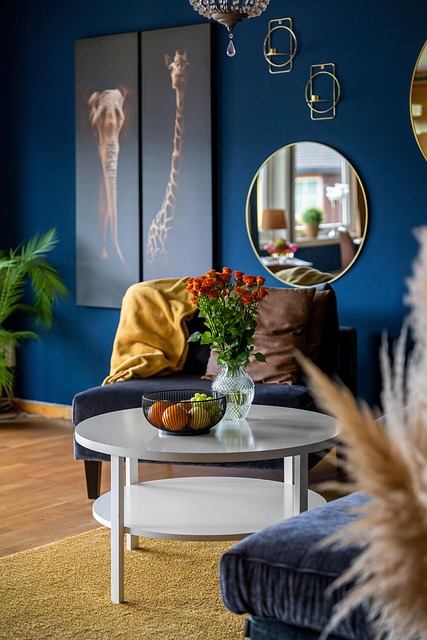Waste management is a critical global issue with significant environmental impacts. Repurposing old fixtures and materials offers a sustainable alternative, extending item lifespans and reducing waste sent to landfills or incinerators. Water-saving fixtures, such as low-flow showerheads and efficient toilets, play a crucial role in both water conservation and promoting a circular economy. Upcycling old bathtubs into sinks and shower stalls into compost bins further enhances sustainability in home renovation. Repurposing existing items, especially in high-water areas like bathrooms and kitchens, offers substantial environmental and financial benefits while fostering creativity and reducing utility bills.
In today’s world, reducing waste is not just an eco-conscious choice but a vital step towards a sustainable future. Among various strategies, repurposing existing fixtures and materials stands out as a game-changer. This article explores how simple acts of repurposiing can significantly mitigate waste, with a special focus on water-saving fixtures—a key component in the pursuit of sustainable living. We’ll guide you through understanding the impact, creative ideas, step-by-step transformations, and environmental/financial benefits of this effective waste reduction method.
Understanding the Impact of Waste: Why Repurposing is Crucial
Waste management is a critical global issue, and understanding its impact is the first step towards positive change. The environmental consequences of disposing of fixtures and materials are significant, contributing to resource depletion and pollution. Repurposing offers a sustainable solution by extending the lifespan of existing items, reducing the demand for new resources, and minimizing waste that ends up in landfills or is incinerated.
In the context of water conservation, repurposing water-saving fixtures and materials plays a vital role. These include transforming old appliances into functional art or storage solutions, reusing pipes and fittings for DIY projects, and salvaging materials like wood or metal from demolition sites. By adopting these practices, we can significantly reduce our environmental footprint, conserve natural resources, and promote a circular economy.
Water-Saving Fixtures: A Key Component in Sustainable Living
In the pursuit of sustainable living, water-saving fixtures stand out as a crucial component. These innovative solutions not only help conserve precious water resources but also contribute to overall cost savings for homeowners and businesses alike. By integrating low-flow showerheads, efficient toilets, and smart irrigation systems, individuals can significantly reduce their water footprint without compromising on comfort or quality.
Repurposing existing plumbing and installing these water-saving fixtures is an eco-friendly approach that diverts waste from landfills and reduces the demand for new resources. Moreover, many modern water-saving fixtures are designed with style in mind, ensuring they seamlessly integrate into various interior aesthetics. This dual benefit of sustainability and design makes them an attractive option for those looking to make their homes more environmentally friendly without significant renovations.
Creative Repurposing Ideas for Kitchen and Bathroom
In the kitchen and bathroom, where water usage is typically high, creative repurposing can significantly contribute to waste reduction. One innovative idea is transforming old bathtubs into unique sinks for your kitchen or creating custom compost bins from surplus shower stalls. Upcycling these fixtures not only gives them new life but also encourages a more sustainable approach to home renovation.
Additionally, integrating water-saving fixtures like low-flow showerheads and aerator taps can further enhance the sustainability of these repurposing efforts. These simple swaps reduce both water consumption and waste generated from replacing perfectly good components. With a bit of creativity, homeowners can transform their spaces while minimizing their environmental footprint.
Transforming Your Home: Step-by-Step Guide to Repurposing
Transforming your home into a more eco-friendly space is an exciting journey, and repurposing existing items is a fantastic way to reduce waste. Here’s a simple step-by-step guide to get you started:
1. Assess Your Space: Begin by taking stock of what you already have. Look around your home, especially in areas like the bathroom and kitchen, where water-saving fixtures are commonly used. You might discover old cabinets, countertops, or sinks that can be given new life. Don’t overlook furniture, too—a simple reupholstering job or a clever rearrangement can transform pieces into something unique.
2. Plan Your Repurposing: Once you’ve identified potential candidates, decide on their new purpose. For instance, an old wooden cabinet could become a stylish storage unit for your bathroom, housing towels and toiletries. A set of drawers can be converted into a compact desk or a side table with a simple makeover. Think creatively; a repurposed item can add character and save you money on buying new. Consider the style and functionality you desire, ensuring that each piece serves its new role effectively.
The Environmental and Financial Benefits of Reducing Waste
Reducing waste through repurposing and recycling existing fixtures and materials offers significant environmental and financial advantages. From an ecological perspective, minimizing waste lessens the strain on natural resources and reduces the demand for new raw materials, thereby preserving ecosystems and reducing greenhouse gas emissions associated with manufacturing processes. This approach also helps mitigate pollution by diverting items from landfills, where they can leach harmful chemicals into the soil and water supply.
Financially, repurposing can be a game-changer. It encourages creativity in finding new uses for old items, potentially saving money that would otherwise be spent on purchasing new products. Additionally, many water-saving fixtures, like low-flow showerheads or efficient toilets, can significantly reduce utility bills over time, making them an attractive investment for both homeowners and businesses looking to cut costs while contributing to a greener planet.
By embracing repurposing as a way of life, we can significantly reduce our environmental footprint. Integrating water-saving fixtures and creatively repurposing existing materials not only minimizes waste but also offers economic benefits. Through simple steps outlined in this guide, anyone can transform their homes into sustainable oases, contributing to a greener planet while saving money. Let’s dive into action and start navigating a path towards a waste-free future, one repurposed item at a time.
